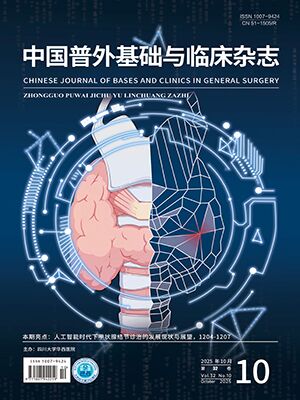| 1. |
Sung H, Ferlay J, Siegel RL, et al. Global cancer statistics 2020: GLOBOCAN estimates of incidence and mortality worldwide for 36 cancers in 185 countries. CA Cancer J Clin, 2021, 71(3): 209-249.
|
| 2. |
Dieci MV, Miglietta F, Guarneri V. Immune infiltrates in breast cancer: recent updates and clinical implications. Cells, 2021, 10(2): 223. doi: 10.3390/cells10020223.
|
| 3. |
Wade KH, Yarmolinsky J, Giovannucci E, et al. Applying Mendelian randomization to appraise causality in relationships between nutrition and cancer. Cancer Causes Control, 2022, 33(5): 631-652.
|
| 4. |
Orrù V, Steri M, Sidore C, et al. Complex genetic signatures in immune cells underlie autoimmunity and inform therapy. Nat Genet, 2020, 52(10): 1036-1045.
|
| 5. |
Wang C, Zhu D, Zhang D, et al. Causal role of immune cells in schizophrenia: Mendelian randomization (MR) study. BMC Psychiatry, 2023, 23(1): 590. doi: 10.1186/s12888-023-05081-4.
|
| 6. |
Gkatzionis A, Burgess S, Newcombe PJ. Statistical methods for cis-Mendelian randomization with two-sample summary-level data. Genet Epidemiol, 2023, 47(1): 3-25.
|
| 7. |
Carter AR, Sanderson E, Hammerton G, et al. Mendelian randomisation for mediation analysis: current methods and challenges for implementation. Eur J Epidemiol, 2021, 36(5): 465-478.
|
| 8. |
Choi HG, Park JH, Choi YJ, et al. Association of family history with the development of breast cancer: a cohort study of 129 374 Women in KoGES data. Int J Environ Res Public Health, 2021, 18(12): 6409. doi: 10.3390/ijerph18126409.
|
| 9. |
Elghazawy H, Bakkach J, Zaghloul MS, et al. Implementation of breast cancer continuum of care in low- and middle-income countries during the COVID-19 pandemic. Future Oncol, 2020, 16(31): 2551-2567.
|
| 10. |
Drummond AE, Swain CTV, Brown KA, et al. Linking physical activity to breast cancer via sex steroid hormones, part 2: the effect of sex steroid hormones on breast cancer risk. Cancer Epidemiol Biomarkers Prev, 2022, 31(1): 28-37.
|
| 11. |
Zhou X, Yu L, Wang L, et al. Alcohol consumption, blood DNA methylation and breast cancer: a Mendelian randomisation study. Eur J Epidemiol, 2022, 37(7): 701-712.
|
| 12. |
Beck MH, Brachaczek IA, Gebert P, et al. Incidence of seroma and postoperative complications after breast surgery before and during the Covid-19 pandemic: results from a retrospective multicenter analysis. BMC Cancer, 2025, 25(1): 91. doi: 10.1186/s12885-025-13425-4.
|
| 13. |
Egg M, Kietzmann T. Little strokes fell big oaks: the use of weak magnetic fields and reactive oxygen species to fight cancer. Redox Biol, 2025, 79: 103483. doi: 10.1016/j.redox.2024.103483.
|
| 14. |
Garcia-Estevez L, Moreno-Bueno G. Updating the role of obesity and cholesterol in breast cancer. Breast Cancer Res, 2019, 21(1): 35. doi: 10.1186/s13058-019-1124-1.
|
| 15. |
Kamat MA, Blackshaw JA, Young R, et al. PhenoScanner V2: an expanded tool for searching human genotype-phenotype associations. Bioinformatics, 2019, 35(22): 4851-4853.
|
| 16. |
Verbanck M, Chen CY, Neale B, et al. Detection of widespread horizontal pleiotropy in causal relationships inferred from Mendelian randomization between complex traits and diseases. Nat Genet, 2018, 50(5): 693-698.
|
| 17. |
陈洁, 彭榆富. 乳腺癌的免疫治疗进展. 中国普外基础与临床杂志, 2019, 26(12): 1403-1408.
|
| 18. |
许晶晶, 刘峰, 杨廷桐, 等. 乳腺浸润性导管癌微环境中的CD4+ T细胞比例、CD8+ T细胞比例及p53基因的表达. 中国普外基础与临床杂志, 2018, 25(3): 328-333.
|
| 19. |
Wang Z, Yang X, Shen J, et al. Gene expression patterns associated with tumor-infiltrating CD4+ and CD8+ T cells in invasive breast carcinomas. Hum Immunol, 2021, 82(4): 279-287.
|
| 20. |
Zahran AM, Rayan A, Zahran ZAM, et al. Overexpression of PD-1 and CD39 in tumor-infiltrating lymphocytes compared with peripheral blood lymphocytes in triple-negative breast cancer. PLoS One, 2022, 17(1): e0262650. doi: 10.1371/journal.pone.0262650.
|
| 21. |
Sirhan Z, Thyagarajan A, Sahu RP. The efficacy of tucatinib-based therapeutic approaches for HER2-positive breast cancer. Mil Med Res, 2022, 9(1): 39. doi: doi: 10.1186/s40779-022-00401-3.
|
| 22. |
Hu XE, Yang P, Chen S, et al. Clinical and biological heterogeneities in triple-negative breast cancer reveals a non-negligible role of HER2-low. Breast Cancer Res, 2023, 25(1): 34. doi: 10.1186/s13058-023-01639-y.
|
| 23. |
Ahuja S, Khan AA, Zaheer S. Understanding the spectrum of HER2 status in breast cancer: from HER2-positive to ultra-low HER2. Pathol Res Pract, 2024, 262: 155550. doi: 10.1016/j.prp.2024.155550.
|
| 24. |
Kortekaas KE, Santegoets SJ, Sturm G, et al. CD39 identifies the CD4+ tumor-specific T-cell population in human cancer. Cancer Immunol Res, 2020, 8(10): 1311-1321.
|




